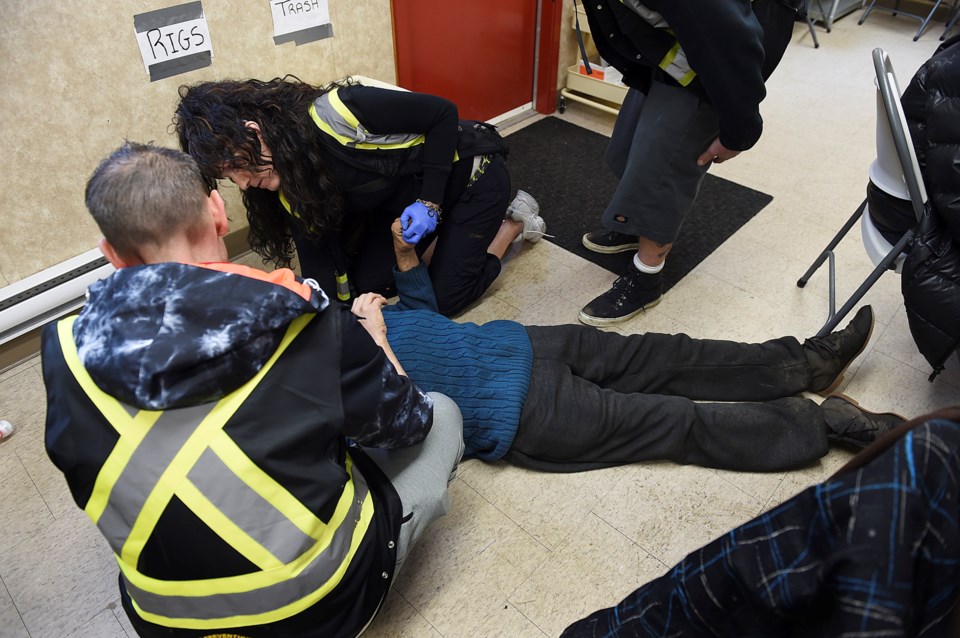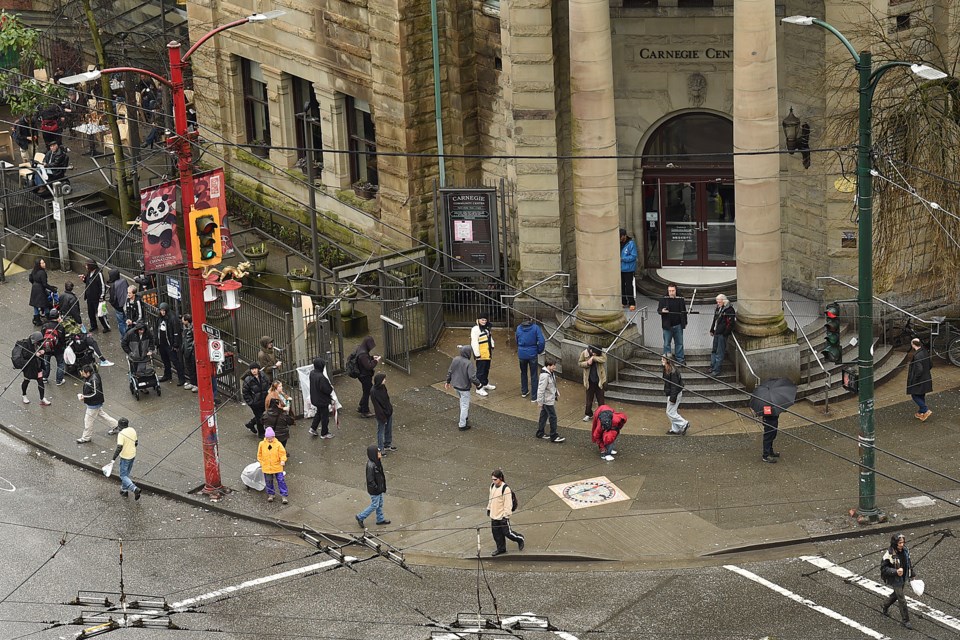Some of you might be tired of reading about the overdose crisis in this city.
I get it, it’s depressing.
So if you’re this far into my column and expecting some sunshine and rainbows in this entry, go get yourself some candy floss and one of those Chicken Soup for the Soul books that I’ve never read. For those of you sticking around, I appreciate it.
I want to tell you a story about Frank Stanley Smith.
He’s currently serving a six-month sentence for selling fentanyl, the deadly synthetic narcotic linked to a majority of the 922 overdose deaths that occurred in B.C. last year; more than 215 of those deaths were recorded in Vancouver, many in the Downtown Eastside.
Smith ended up in jail after he sold drugs on Jan. 20, 2015 to a person who turned out to be an undercover cop. Police arrested Smith, who was in possession of 13 flaps of fentanyl (that’s the equivalent of 2.6 grams), 18 flaps of powdered cocaine (4.2 grams) and several rocks of crack cocaine weighing a total of 3.2 grams.
He made bail, only to get arrested two days later for breaching a condition to keep out of the Downtown Eastside. Police found 15 packages of fentanyl on Smith and 45 “balls of cocaine,” as the court documents described it.
He later pleaded guilty to possession of cocaine for the purposes of trafficking and received a suspended sentence. The Crown stayed the charge related to fentanyl; I’m not sure why. Then on Feb. 6, 2015, he got in trouble again after police arrested him in the same area of the Downtown Eastside.
Tylenol 3
This time, Smith was in possession of Tylenol 3 and three tablets of clonazepam, which is used to treat seizures and panic disorders. He was found guilty of breaching that same condition to stay out of the Downtown Eastside but received an absolute discharge.
Where am I going with all this?
A couple of places.
First, what the heck is a 59-year-old guy doing selling drugs?
Interestingly, Smith had no criminal record at the time he was sentenced late last year. The guy has worked as a landscaper, carpenter, a railway worker, security guard, cargo handler and — get this — a special native constable for the RCMP.
But here’s the kicker, as we like to say in the newsroom: Smith suffered a serious knee injury in 1983. That led to five operations. He was prescribed Tylenol 3 and says he became dependent on the drug. When he was sentenced to six months in prison, the judge concluded the primary motivation for drug dealing was to support his dependence on Tylenol 3.
It’s a conclusion that brings me back to a previous column I wrote in February, which asked this question: Are medical doctors to blame for the opioid overdose crisis?
The answer, which was supplied by Provincial Court Judge Bonnie Craig after sentencing another fentanyl dealer to 13 years and 144 days in prison, was an absolute yes.
Craig based her answer on the testimony of medical doctor James Kennedy, who, she said, “agreed that much of the blame for what has been described as the opioid epidemic can be attributed to the over-prescription of opioids as pain medication by medical doctors.”
She added: “In the 1990s, doctors were convinced by prescription drug companies that opioid painkillers were effective and rarely caused addiction. As the medical profession started to better understand the risks associated with opioid use, including its addictive qualities, doctors started to cut patients off their prescriptions. This led to people turning to the street to find their drugs, which in turn led to an increased demand for opioids on the street.”

So, here’s another question: Can you draw a straight line from the doctor's conclusion about over-prescription to why 59-year-old Frank Stanley Smith turned to drug dealing?
Maybe, maybe not.
For the record, Smith told the court he didn’t believe he was selling fentanyl; he thought it was heroin. He added that had he known it was fentanyl, he would have never sold it. He also told the court he was heavily addicted at the time of his dealing but has since undergone substance abuse counselling. He was embarrassed and promised not to get involved in crime again.
Bullied in high school
Smith, who was raised by two hard-working parents in Carcross in the Yukon, was one of 11 children. Smith said he was bullied in high school and dropped out in Grade 10. He was married in 1979, but the relationship ended after five years. He has a daughter, but requested she not be contacted by the courts for his pre-sentence report; at the time, he had not told her about his arrest.
At sentencing, the judge acknowledged he was bound to consider Smith’s Aboriginal heritage but found “little evidence that this background would lessen the offender’s culpability or reduce the effectiveness of any prison sentence.”
The judge continued: “To the contrary, the only evidence before me was that Mr. Smith had a relatively unremarkable upbringing free of alcohol or physical abuse of any sort, and that he has led a productive life that included mostly continuous employment and a daughter of remarkable accomplishment.”
Sounds like a regular guy.
Drugs, as they are prone to do in this city, turned him in to something else.
Vancouver, you’re not as beautiful as you look.
mhowell@vancourier.com
@Howellings



